Artist Eva Jospin on landscapes, architecture, and her Ruinart carte blanche commission
We visit the Paris studio of artist Eva Jospin to discover ‘Promenade[s]’, her carte blanche commission for champagne house Ruinart. Expect cardboard bas-reliefs, miniature landscapes, drawings, embroidery, and an 18th-century device called the carmontelle
Vincent Ferrané - Photography
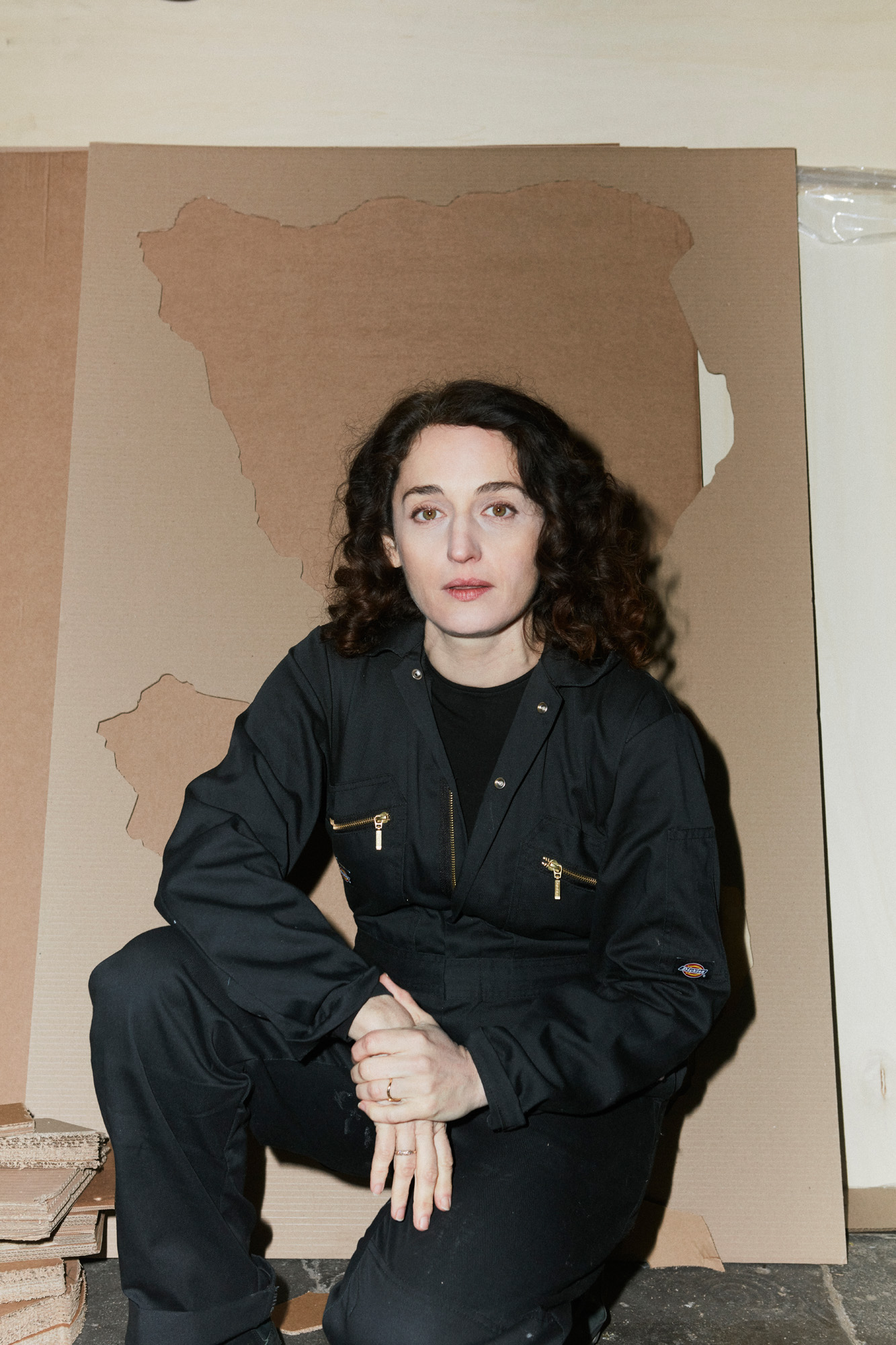
The Parc des Buttes-Chaumont, in the 19th arrondissement, is one of Eva Jospin’s favourite places in Paris. Its landscape had been barren and ridden with holes from centuries of gypsum mining until the mid-19th century, when park designer Jean-Charles Adolphe Alphand transformed it into a magnificent garden – with sprawling lawns, an artificial lake, a grotto with a 20m-high waterfall, and a miniature Roman temple perched on its highest point. ‘It’s amazing what we can do to redeem abandoned industrial spaces, so they become places to go and walk around, and to set your imagination free,’ says Jospin, as we meet for lunch in Paris in December 2022 to discuss her collaboration with champagne house Ruinart.
Buttes-Chaumont itself has little to do with Champagne, but the park came to Jospin’s mind on her first visit to Maison Ruinart in Reims, the region’s main city. Following a tour of Ruinart’s vineyards, she was led 40m underground to the crayères – the ancient chalk quarries that the maison’s founding family transformed into wine cellars in the late 18th century, when they realised that it offered optimal conditions for ageing champagne. Like Buttes-Chaumont, it’s an excellent example of adaptive reuse, says Jospin: ‘It’s beautiful that a place that wasn’t made for storing champagne somehow makes Ruinart’s product better – an opportunistic vision of life.’
Eva Jospin and her Ruinart carte blanche commission
![One of four bas-relief forest panels created for ‘Promenade[s]’, Eva Jospin’s carte blanche commission for Ruinart](https://cdn.mos.cms.futurecdn.net/SCNwBqzQnLWuDdLAxVFzLW.jpg)
One of four bas-relief forest panels created for ‘Promenade[s]’, Eva Jospin’s carte blanche commission for Ruinart
Jospin’s fascination with both sites is evident in the miniature landscapes that she has created as part of her Ruinart carte blanche commission, ‘Promenade[s]’, which will be unveiled in Paris next month (the project’s alumni include Jeppe Hein, David Shrigley, Vik Muniz and Liu Bolin).
She calls these pieces ‘petits chefs-d’oeuvre’ (small masterpieces), in reference to the works that European craftspeople traditionally produced to qualify for guild membership. A central piece stands about 4m high, and five smaller satellite pieces each depict a landscape with artificial caves, architectural elements such as pavilions and nymphaeums, and staircases to encourage the viewer to imagine themselves meandering along. The pieces are connected by bridges and can be assembled in different configurations to adapt to their exhibition spaces in a year's worth of art fairs, including Art Basel, Frieze London and Art Basel Miami Beach.
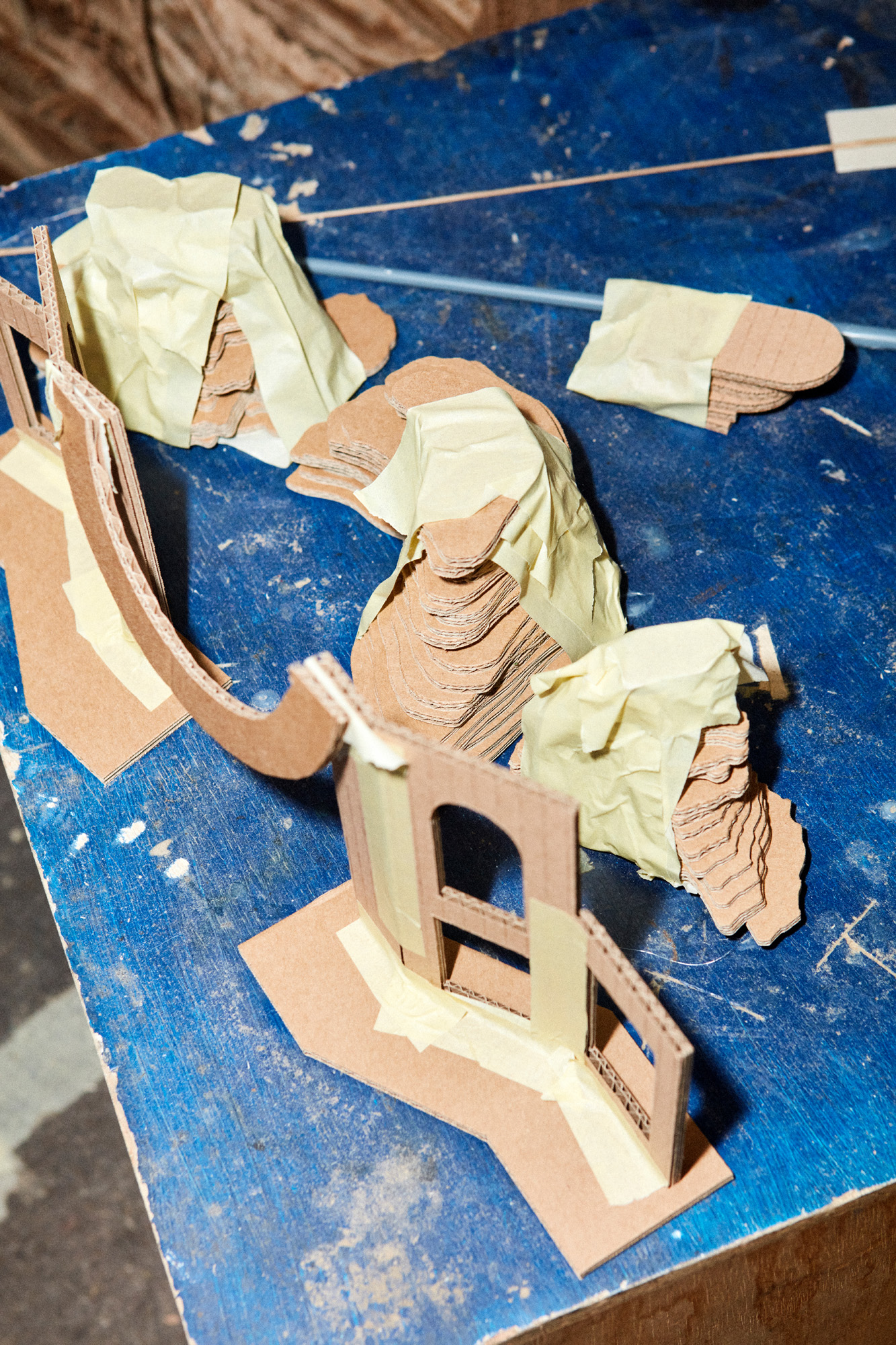
A cardboard model in Eva Jospin’s studio used to determine the shape and configuration of her petits chefs-d’oeuvre
The architectural elements pay homage to the Italian Renaissance – a key source of inspiration for Jospin – as well as the Cathédrale Notre-Dame de Reims, where the kings of France were traditionally crowned. According to Jospin, French children learn about Reims in the context of these coronations long before they are aware of champagne-making, and the cathedral itself is a notable example of Gothic architecture, one of her personal passions (before becoming an artist, she spent a year at architecture school.) In creating the petits chefs-d’oeuvre, Jospin has referenced the cathedral’s forms and proportions, as well as ‘the ideas of ornament, fragility and precision’ within Gothic architecture.

An element of Eva Jospin’s petits chefs-d’oeuvre, made of many layers of precisely cut corrugated cardboard, which will eventually be sanded down to achieve smoother surfaces
The construction of these petits chefs-d’oeuvre is more architectural than sculptural. Having drawn the landscapes by hand, Jospin vectorises the lines with a computer programme, so she can move elements around and change their scale. From there, it’s a process of distilling her forms into layers, so that they can be built by stacking and glueing precisely cut sheets of corrugated cardboard. The cardboard forms are then sanded down, so the occasional sheets of coloured paper sandwiched between them peek out ‘like veins in stone’. Finally, she adds smaller decorative elements in other materials such as cork and brass.
Accompanying the petits chefs-d’oeuvre are cardboard bas-reliefs of forests, a Jospin signature. She made her first bas-relief forest about 14 years ago, and soon found herself working in the same material and style again and again: ‘You know you’ve found something when you have a special sensation. You don’t get bored of it – it gives you a special energy because you want to go and do more.’ She famously filled a steel pavilion in the Louvre’s Cour Carrée with these bas-reliefs in 2016, and five years later, unveiled a permanent installation on Boulevard Raspail, in the 7th arrondissement, comprising a mirrored passage lined with a 22m cardboard forest. Cardboard is not only lightweight, sturdy and environmentally friendly, it also has happy parallels with grape in that a humble material can be made special through carefully calibrated gestures. Forests, meanwhile, are at once shelters and sites of danger, encapsulating the ambivalence of nature.
Receive our daily digest of inspiration, escapism and design stories from around the world direct to your inbox.

Eva Jospin at work on one of her bas-relief forest panels
In comparison to Jospin’s best-known works, the forests she has made for Ruinart are smaller (four panels, totalling 6m wide), but no less ornate. Here, they are a reference to the trees that border Taissy Vineyard, where Ruinart has implemented an ambitious project to promote biodiversity. In the past two years, they ripped out thousands of grape vines and replaced them with nearly 25,000 trees and shrubs. ‘I was very surprised to hear that,’ recalls Jospin, who points out that greenwashing is not uncommon elsewhere in the industry. ‘But the Ruinart team explained to me what they are doing, and having been around for so many years, they know how to preserve nature. It’s something you have to do in the present, with a vision for the future.’
Jospin emphasises that these bas-reliefs are not meant to be a direct representation of the plant species within Ruinart’s woodlands: ‘It’s a real forest, but it’s not because the shape of the elements is an imitation. It’s the profusion of vegetation, and the chaotic elements of the floor, and the shadows. You feel it’s a forest because it has the structure of a forest.’
‘Promenade[s]’ further comprises a series of Chinese ink drawings of meticulously detailed gardens (‘My great goal in life is to create my own garden or park,’ says the artist), and embroidered wall hangings with landscape motifs. The latter have been made by the Chanakya School of Craft in Mumbai, which Jospin had previously commissioned to create a 95m x 3.5m embroidered backdrop for the Dior haute couture show in July 2021. Mixing linen, silk and brass threads, the embroidery offers a vibrant counterweight to the muted colour palette of the cardboard elements. Embroidery is a relatively new medium for Jospin, inspired by time spent in Italy – she had visited the Indian embroidery room at Rome’s Palazzo Colonna in 2017, while she was a resident artist at Villa Medici.

The artist hand-cutting cardboard elements of her artwork
Tying together all the elements of the installation is a carmontelle, an early ancestor of the motion picture named after the 18th-century painter and dramatist Louis Carrogis Carmontelle. It comprises a roll of paper stretched between two spools, attached to a crank that can be turned to reveal a series of drawings. During our studio visit, Jospin unfurls her work-in-progress to show a dense patch of soaring trees and twirling vines, interlaced to fill every centimetre of the initial section (further sections will feature grottoes, fountains, architecture, and eventually a forest once again to complete the two-metre-long artwork). She explains that she’ll cut out certain elements to reveal a dark background underneath, and the artwork will be backlit for dramatic effect. ‘In a way, the carmontelle is the narrative of the carte blanche, because it includes all the elements. One part then metamorphoses into embroidery, one becomes a chefs-d’oeuvre, another turns into the [bas-relief] forests, another becomes a new drawing. It’s the same idea, taking different shapes, forms and expressions. A world that starts with a line.’
As part of the carte blanche commission, Ruinart also asked Jospin to create what it calls a Limited Edition – a blanc de blancs champagne with packaging designed by the artist. Eschewing grand gestures, she has opted to take Ruinart’s usual wooden boxes and fill them with layers of cardboard that have been hollowed out to accommodate a champagne bottle. ‘There’s only 25 of these, and they’re not that big, so I’ve decided to make them in the studio and will sand each one by hand,’ she says.
As the title 'Promenade[s]' suggests, Jospin’s carte blanche commission invites the viewer to wander through the past, present and future of Champagne. But the installation is also open to wider interpretations: ‘It’s very evocative, and when people are in front of it, they will start to create their own narratives. Some people might think of Hong Kong, or Petra, or a fairytale forest. It links them to somewhere in their minds, and to an imaginary world.’
‘Promenade[s]’ will be unveiled in Paris in March 2023, ruinart.com
TF Chan is a former editor of Wallpaper* (2020-23), where he was responsible for the monthly print magazine, planning, commissioning, editing and writing long-lead content across all pillars. He also played a leading role in multi-channel editorial franchises, such as Wallpaper’s annual Design Awards, Guest Editor takeovers and Next Generation series. He aims to create world-class, visually-driven content while championing diversity, international representation and social impact. TF joined Wallpaper* as an intern in January 2013, and served as its commissioning editor from 2017-20, winning a 30 under 30 New Talent Award from the Professional Publishers’ Association. Born and raised in Hong Kong, he holds an undergraduate degree in history from Princeton University.
-
 The most anticipated hotel openings of 2026
The most anticipated hotel openings of 2026From landmark restorations to remote retreats, these are the hotel debuts shaping the year ahead
-
 Is the future of beauty skincare you can wear? Sylva’s Tallulah Harlech thinks so
Is the future of beauty skincare you can wear? Sylva’s Tallulah Harlech thinks soThe stylist’s label, Sylva, comprises a tightly edited collection of pieces designed to complement the skin’s microbiome, made possible by rigorous technical innovation – something she thinks will be the future of both fashion and beauty
-
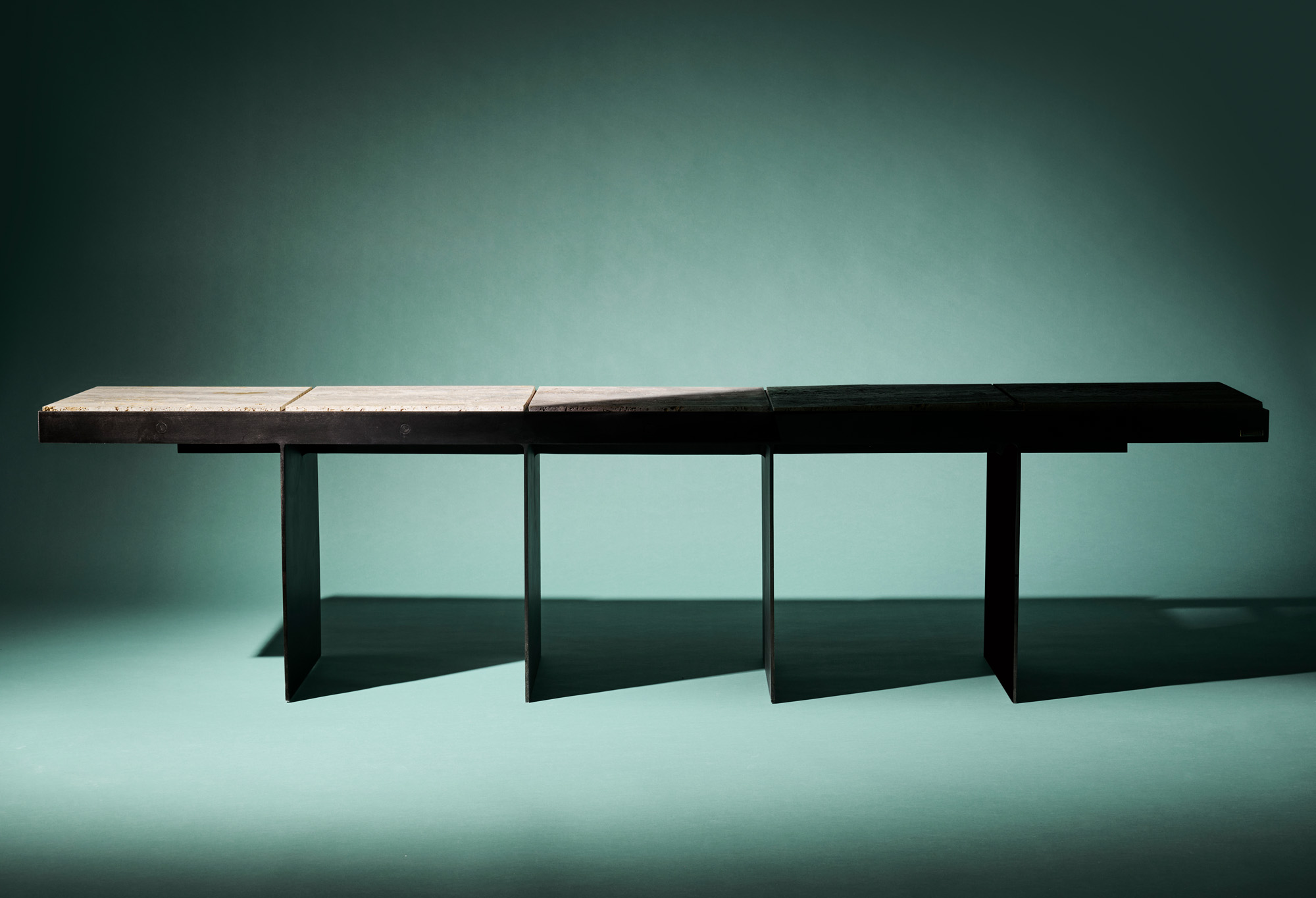 A resort, ravioli and a rocket are just a few of the ongoing projects from British-Indian designer Armaan Bansal
A resort, ravioli and a rocket are just a few of the ongoing projects from British-Indian designer Armaan BansalWallpaper* Future Icons: Anda Ba studio founder Armaan Bansal draws inspiration from India's natural materials and contemporary London culture
-
 Edinburgh Art Festival 2023: from bog dancing to binge drinking
Edinburgh Art Festival 2023: from bog dancing to binge drinkingWhat to see at Edinburgh Art Festival 2023, championing women and queer artists, whether exploring Scottish bogland on film or casting hedonism in ceramic
-
 Last chance to see: Devon Turnbull’s ‘HiFi Listening Room Dream No. 1’ at Lisson Gallery, London
Last chance to see: Devon Turnbull’s ‘HiFi Listening Room Dream No. 1’ at Lisson Gallery, LondonDevon Turnbull/OJAS’ handmade sound system matches minimalist aesthetics with a profound audiophonic experience – he tells us more
-
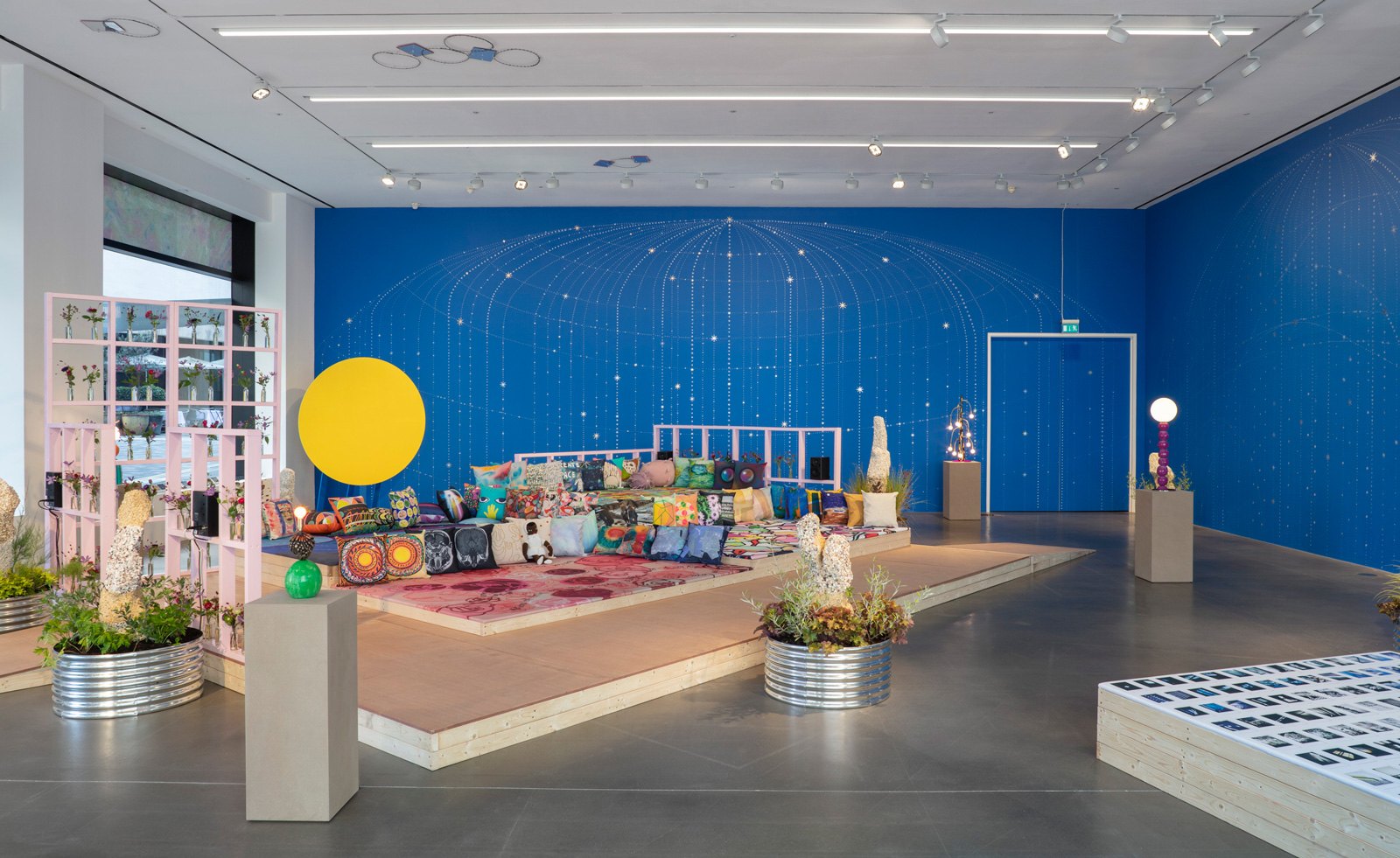 Hospital Rooms and Hauser & Wirth unite for a sensorial London exhibition and auction
Hospital Rooms and Hauser & Wirth unite for a sensorial London exhibition and auctionHospital Rooms and Hauser & Wirth are working together to raise money for arts and mental health charities
-
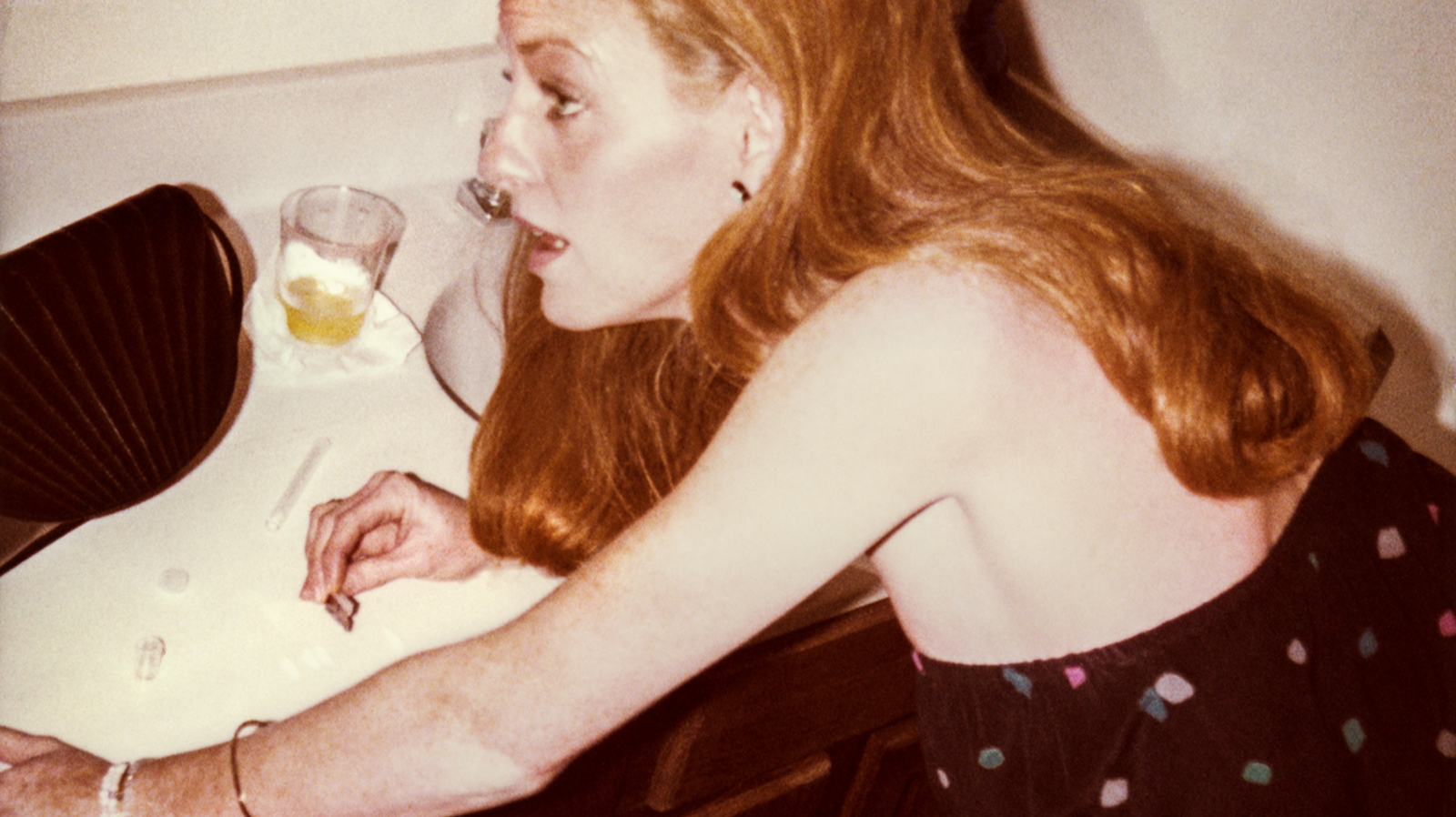 ‘These Americans’: Will Vogt documents the USA’s rich at play
‘These Americans’: Will Vogt documents the USA’s rich at playWill Vogt’s photo book ‘These Americans’ is a deep dive into a world of privilege and excess, spanning 1969 to 1996
-
 Brian Eno extends his ambient realms with these environment-altering sculptures
Brian Eno extends his ambient realms with these environment-altering sculpturesBrian Eno exhibits his new light box sculptures in London, alongside a unique speaker and iconic works by the late American light artist Dan Flavin
-
![The Bagri Foundation Commission: Asim Waqif, वेणु [Venu], 2023. Courtesy of the artist. Photo © Jo Underhill. exterior](https://cdn.mos.cms.futurecdn.net/QgFpUHisSVxoTW6BbkC6nS.jpg) Asim Waqif creates dense bamboo display at the Hayward in London
Asim Waqif creates dense bamboo display at the Hayward in LondonThe Bagri Foundation Commission, Asim Waqif’s वेणु [Venu], opens at the Hayward Gallery in London
-
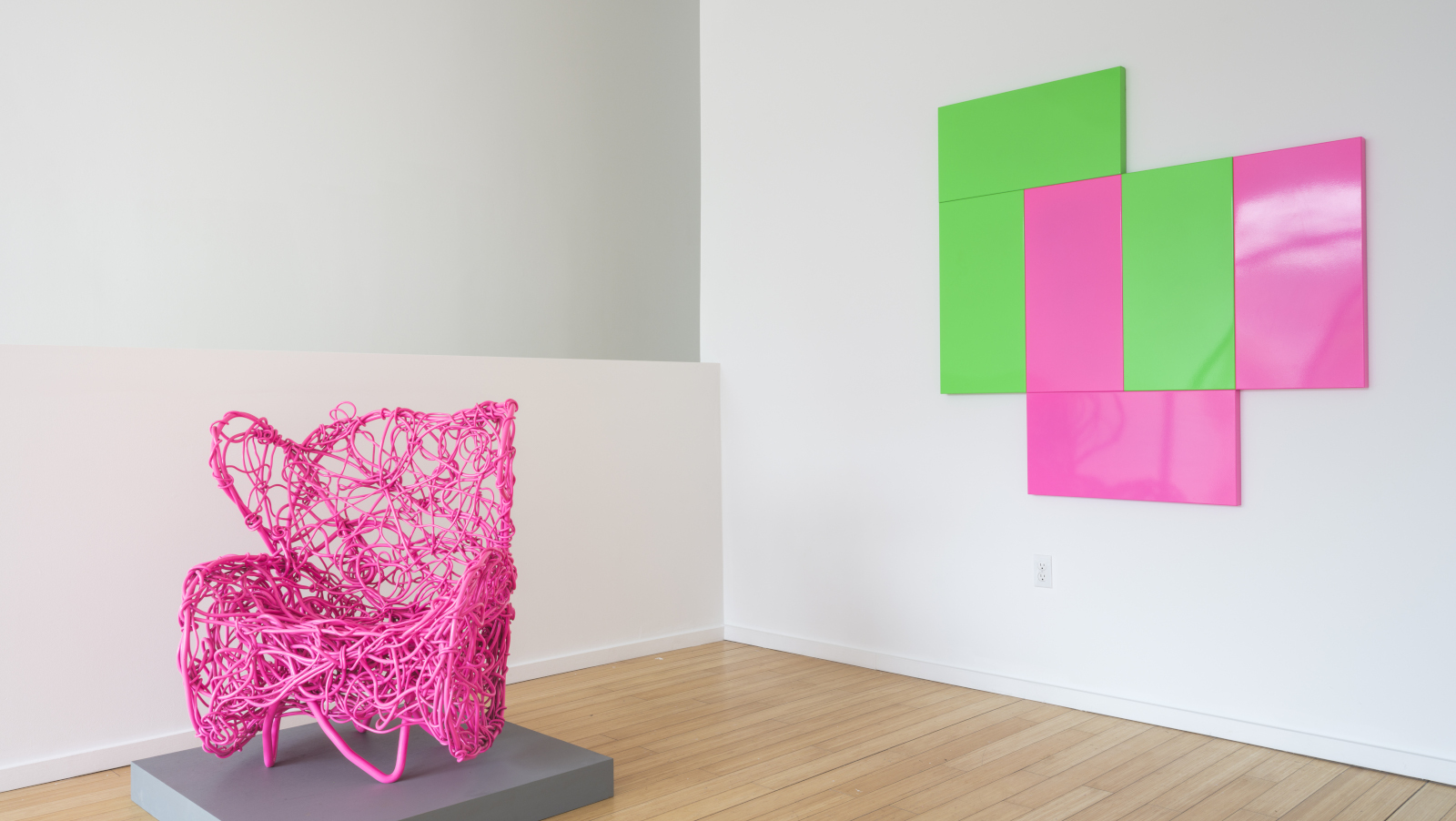 Forrest Myers is off the wall at Catskill Art Space this summer
Forrest Myers is off the wall at Catskill Art Space this summerForrest ‘Frosty’ Myers makes his mark at Catskill Art Space, NY, celebrating 50 years of his monumental Manhattan installation, The Wall
-
 Jim McDowell, aka ‘the Black Potter’, on the fire behind his face jugs
Jim McDowell, aka ‘the Black Potter’, on the fire behind his face jugsA former coal miner, Jim McDowell defied the odds to set up his workshop and keep a historic form of American pottery alive